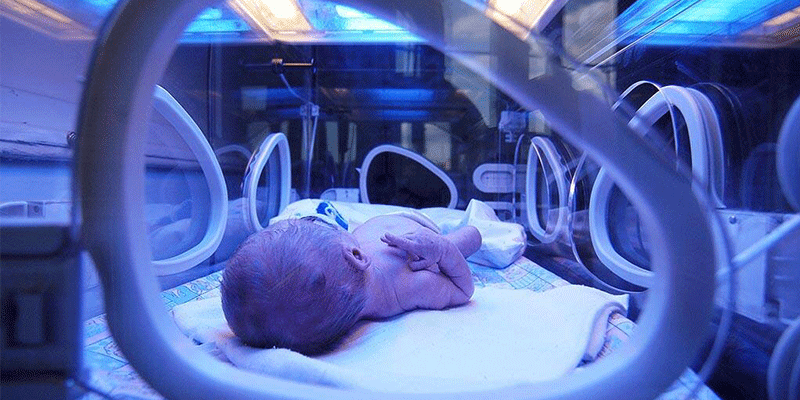
Jaundice is the yellow color seen in the skin of many newborns. It happens when a chemical called bilirubin builds up in the baby’s blood. Jaundice can occur in babies of any race or color.
Q: Why is jaundice common in newborns?
A: Everyone’s blood contains bilirubin, which comes from red blood cells and is removed by the liver. Before birth, the mother’s liver does this for the baby. Most babies develop jaundice in the first few days after birth because it takes a few days for the baby’s liver to get better at removing bilirubin.
Q: How can I tell if my baby is jaundiced?
A: The skin of a baby with jaundice usually appears yellow. The best way to see jaundice is in good light, such as daylight or under fluorescent lights. Jaundice usually appears first in the face and then moves to the chest, abdomen, arms, and legs as the bilirubin level increases. The whites of the eyes may also be yellow. Jaundice may be harder to see in babies with darker skin color.
Q: Can jaundice hurt my baby?
A: Most babies have mild jaundice that is harmless, but in unusual situations the bilirubin level can get very high and might cause brain damage. This is why newborns should be checked carefully for jaundice and treated to prevent a high bilirubin level.
Q: How should my baby be checked for jaundice?
A: If your baby looks jaundiced in the first few days after birth, your baby’s doctor or nurse may use a skin or blood test to check your baby’s bilirubin level. However, because estimating the bilirubin level based on the baby’s appearance can be difficult, most experts recommend that a skin or blood test be done in the first 2 days even if your baby does not appear jaundiced. A bilirubin level is always needed if jaundice develops before the baby is 24 hours old. Whether a test is needed after that depends on the baby’s age, the amount of jaundice, and whether the baby has other factors that make jaundice more likely or harder to see.
Last Updated 6/19/2017
Source Jaundice and Your Newborn (© 2006 American Academy of Pediatrics, Updated 12/2016)
The information contained on this Web site should not be used as a substitute for the medical care and advice of your pediatrician. There may be variations in treatment that your pediatrician may recommend based on individual facts and circumstances.






